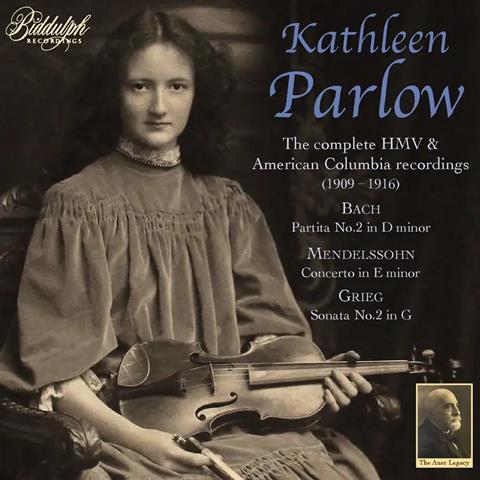A treasurable reminder of a great Auer-trained violinist

THE STRAD RECOMMENDS
The Strad Issue: March 2024
Description: A treasurable reminder of a great Auer-trained violinist
Musicians: Kathleen Parlow (violin) Charles Adams Prince, Ernest MacMillan (pianos) CBC Symphony Orchestra/Geoffrey Waddington
Works: Bach: Violin Sonata in A minor BWV1003 (Andante only); Partita in D minor BWV1004. Grieg: Violin Sonata no. 2 (Lento doloroso – Allegro vivace only). Mendelssohn: Violin Concerto in E minor; works by Arensky, Chopin, Drigo, Dvořák, Halvorsen, Kreisler, Massenet, Mendelssohn, Paganini, Schubert, Svendsen, Tchaikovsky etc
Catalogue number: BIDDULPH 85036-2 (2 CDS)
As it happens, I have not listened to any of Kathleen Parlow’s records recently, so I was all agog to hear them when this marvellous set arrived. I had only to play the famous fast, accurate account of Paganini’s Moto perpetuo, one of her four 1909 HMV 78rpm sides, to know that I was in for a treat.
This review will be shorter if I name those of the 25 genre pieces (plus five remakes) that impress me less. Of the HMVs, Bach’s Air strikes me as rather lugubrious. From 1912 Parlow recorded for Columbia and of these sides, Beethoven’s Minuet in G is strangely slow, Rubinstein’s Melody in F is almost military-sounding and Bach’s Gavotte is a bit peremptory. I am not sure that Mascagni’s Cavalleria rusticana Intermezzo works on solo violin.
My favourite of the acoustic records is a transcription of Thomas Moore’s The Last Rose of Summer, slowly and lovingly played in 1912 – the 1916 remake is very similar, almost as magical. Two Halvorsen pieces which share a 1909 HMV side are beautifully done.
Read: ’Lost’ Halvorsen violin concerto unearthed in Canada
Read: Who were the early female violinists?
Read: Christie’s exhibits $60m Stradivarius and Guarneri collection in Shanghai and Hong Kong
In 1941, after years of wanderings, Parlow returned to her native Canada and broke a quarter of a century of silence – as far as posterity is concerned – with a radio recording of Mendelssohn’s E minor Concerto. At 50 her famed Auer technique is still in great shape and this is a beautiful, satisfying performance in excellent sound.
The first movement of Grieg’s Sonata no.2 from the same year, with Ernest MacMillan at the piano, is slightly compromised sonically but not enough to efface the superb music making of these two great artists.
Finally, from 1957 when Parlow was 66, we have solo Bach, a probing Andante from the A minor Sonata and the entire D minor Partita. It is a shame that the Chaconne has some of the worst sound, but nothing can dim the impact of Parlow’s artistry.
TULLY POTTER











































No comments yet